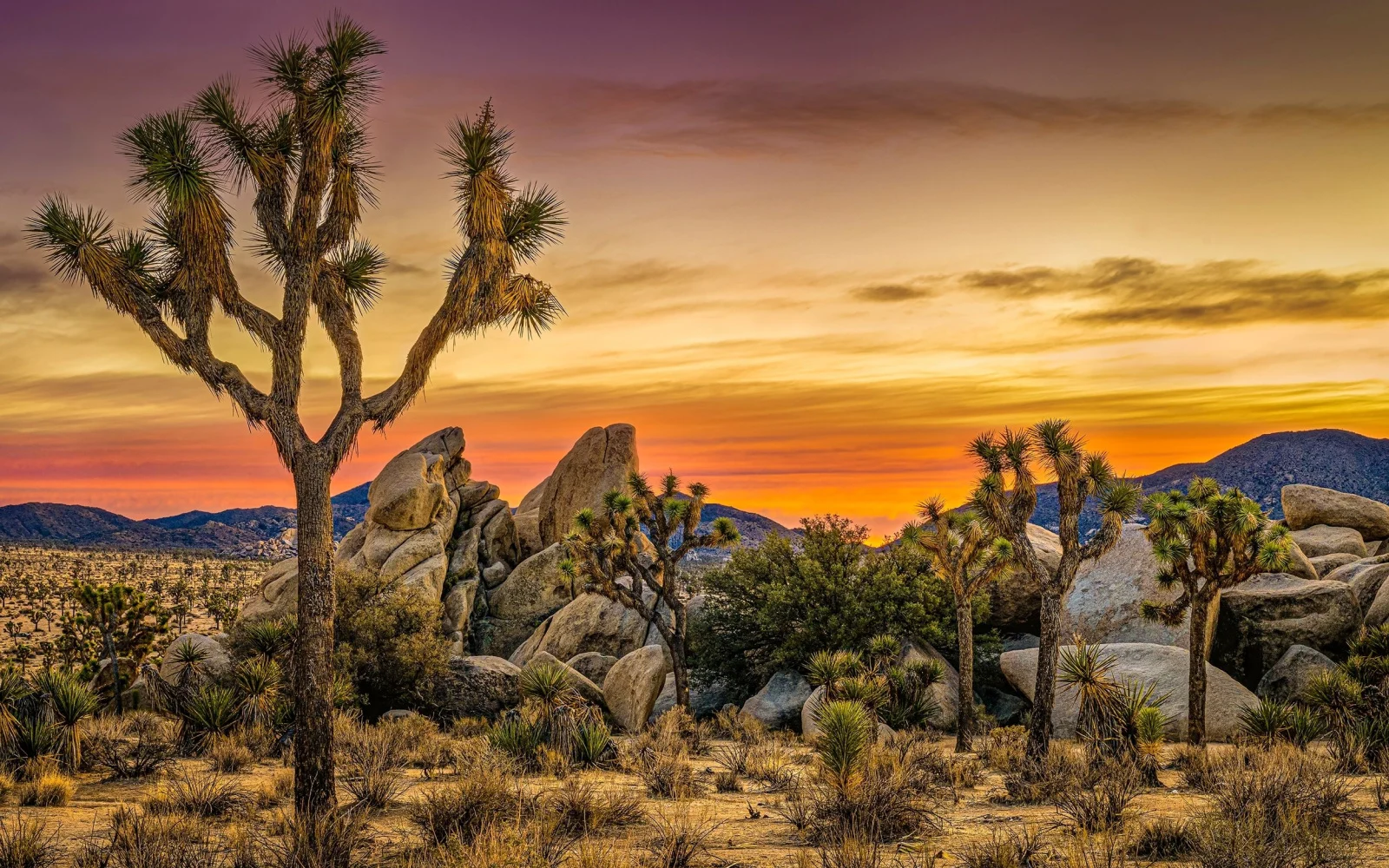What's the best time to visit Joshua Tree?
The best time to visit Joshua Tree is in early spring (March-April) or late fall (October-November) when the desert weather is most comfortable. Spring showcases vibrant wildflowers but can be crowded, while autumn provides pleasant conditions and fewer visitors.
While it’s a great time to visit, be sure to keep an eye out for occasional heavy rains during the U.S. southwestern monsoon season (July-September) and be prepared for possible flash floods.
Joshua Tree is one of the most popular national parks in the United States thanks to its stark, otherworldly landscapes. The strange species of tree that makes the thousands of acres of desert home has also given its name to the park.
The best things to do in Joshua Tree are all in nature, such as hiking through the trees, and camping under the stars. If you visit the nearby town of the same name, you can see a quirky community of artists and musicians, making their home in the desert.
Joshua Tree is in the desert, which means that it has a fairly harsh climate. We’ll help you figure out the best time to visit.
Overall Best Time to Visit Joshua Tree
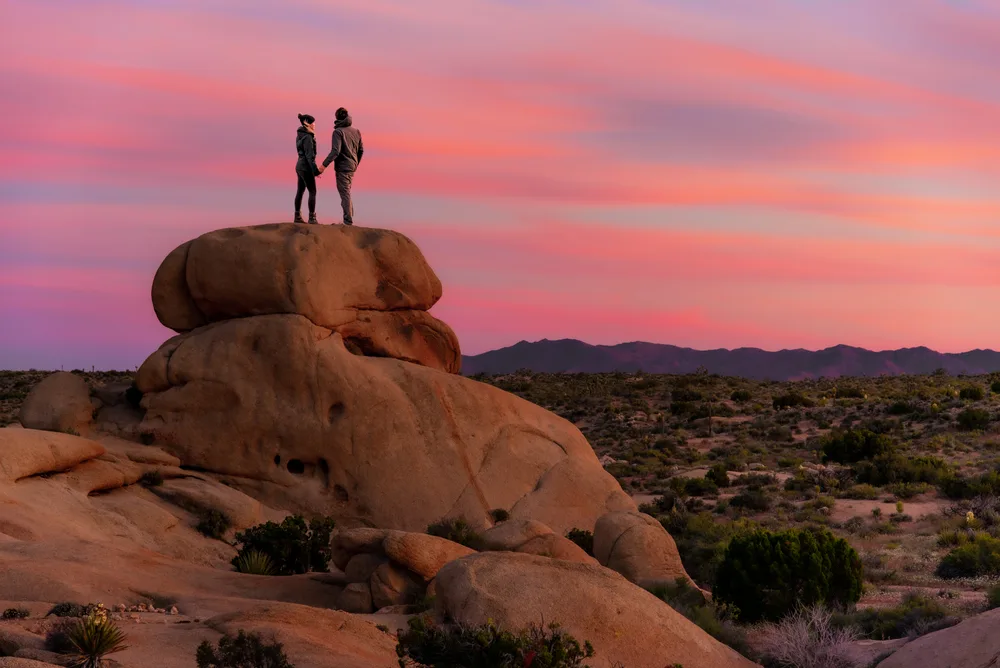
Scalia Media/Shutterstock
The best time to visit Joshua Tree is during the early spring (March-April) or late fall (October-November), which is when the weather is the best for exploring the desert.
Joshua Tree is located in the desert, which means that it has the extreme climate that most deserts have. According to U.S. Climate Data, temperatures in the summer reach 100 degrees or more.
In the winter, low temperatures at night are close to freezing, making camping uncomfortable. Spring and fall have relatively mild temperatures compared to the two extreme seasons.
Although you should still prepare for extreme temperature fluctuations between night and day as well as potential storms, the differences are less drastic.
Temperatures are in the mid 70s to low 80s during March, April, May, and October, making these months the most pleasant for visiting — and the safest for physical activity. Other natural conditions make spring and fall the best seasons to visit.
Spring brings wildflower blooms to the park, especially if there was rain and snow over the winter. Rangers organize wildflower tours, taking visitors to the best viewpoints.
Be warned that many other people will have the same idea to come look at desert wildflowers. Spring is the most popular time to visit Joshua Tree, so expect plenty of crowds. You’ll have to reserve entry passes and campsites well in advance.
Autumn has good weather, just like spring, but is somewhat less popular with visitors. Visiting during this season is a great option if you want to hike, climb, or enjoy other outdoor activities. There are even some sporadic wildflower blooms in the fall.
Autumn is a great time to visit the nearby town of Joshua Tree itself. The town comes alive during tourist season, with many businesses catering towards tourists, such as restaurants, opening longer during the season.
There are also plenty of cultural events put on once the temperatures become more comfortable, such as:
- Open Studio Art Tours by local artists (October)
- Joshua Tree Music Festival (May & October)
- Joshua Tree National Park Art Expo (November)
In the fall, Joshua Tree does get affected by the U.S. southwestern monsoon season, which brings occasional heavy rains to the region from July to September.
It rains rarely in the desert, but when it does the area is at risk of flash flooding. Make sure you check weather conditions ahead of time and adjust your plans if there is a storm warning.
Cheapest Time to Visit Joshua Tree
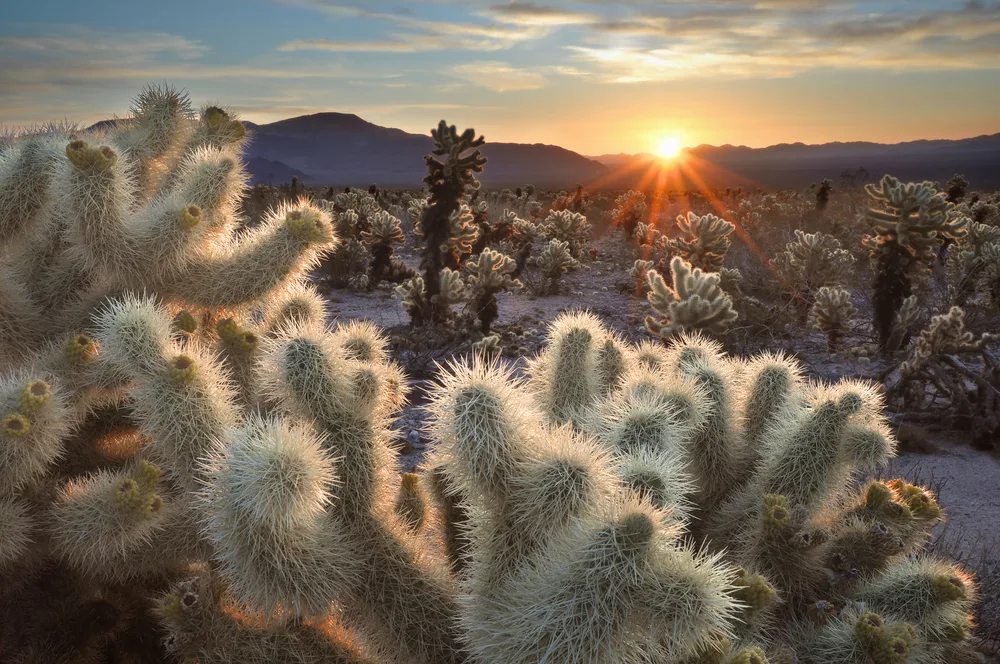
Sierralara/Shutterstock
The cheapest time to visit Joshua Tree is in the summer, when the very hot weather drives away many tourists. Unlike for most national parks, summer is actually Joshua Tree’s low season.
That means that during the summer, you can expect far fewer visitors, and less demand that can drive prices up. Hotels and vacation rentals in the nearby town tend to offer discounts in the summer, when they can struggle to find guests.
The least expensive month of summer is September, once school vacations are over. Some families choose to brave the heat and visit in July and August, but most kids are back in school by early September.
However, if you were planning on camping inside the park itself, cost will not matter as much.
The campsites have the same fee all year round. It may cost less to visit during the winter if you are camping and planning to fly in, since across the United States flights are the least expensive between mid-January and mid-March.
Least Busy Time to Visit Joshua Tree
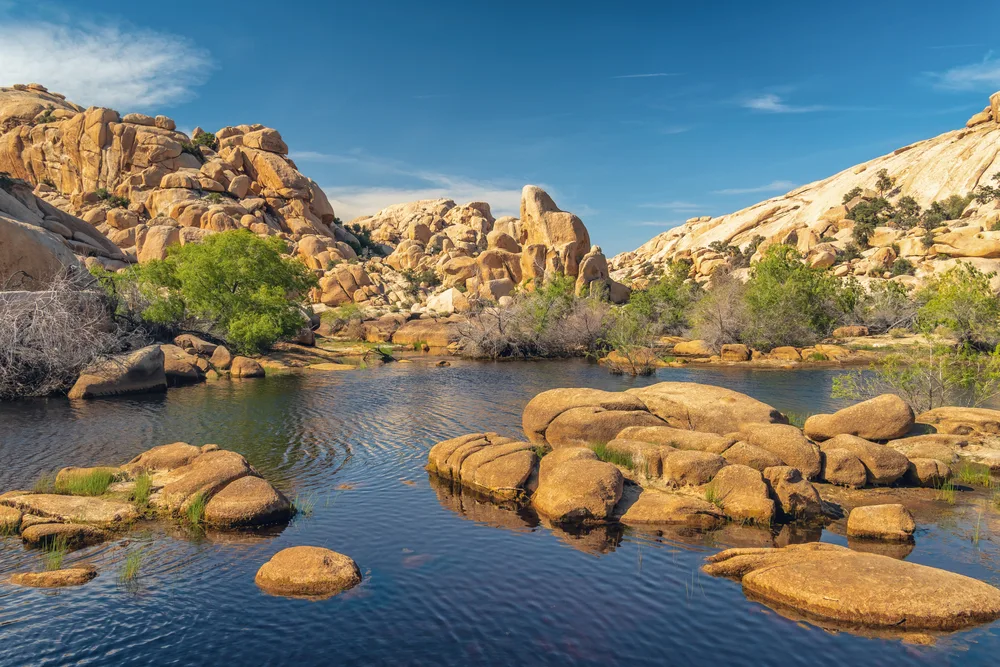
HannaTor/Shutterstock
The least busy time to visit Joshua Tree is the sweltering hot summer, but you can also avoid some of the crowds in the winter if you prepare right. Summer is definitely the least busy time for the desert park.
Visitor numbers drop by nearly 50% compared to the spring peak season. There is so little demand that the park actually closes some places in popular campsites. You’ll be able to have the open campsites pretty much all to yourself.
If you want to avoid the worst of the crowds but still be able to go hiking, then the best time to visit is during the winter.
Between November and early March, Joshua Tree gets far fewer visitors than arrive in the spring or fall, although there are still plenty of other people around. During the day, temperatures are cool but not too cold. If you wear warm layers, you can explore the park comfortably.
Winter is the best season for spotting wildlife since the cooler temperatures mean more animals such as coyotes and kangaroo rats are out and about. Plus, the highest points in the park even get snow, a truly special sight!
If you do visit during the winter, don’t underestimate how cold it can get, especially at night. Visitors have gotten hypothermia before. Read up on the park’s safety tips before you visit and make sure your camping gear is certified for cold weather.
Worst Time to Visit Joshua Tree
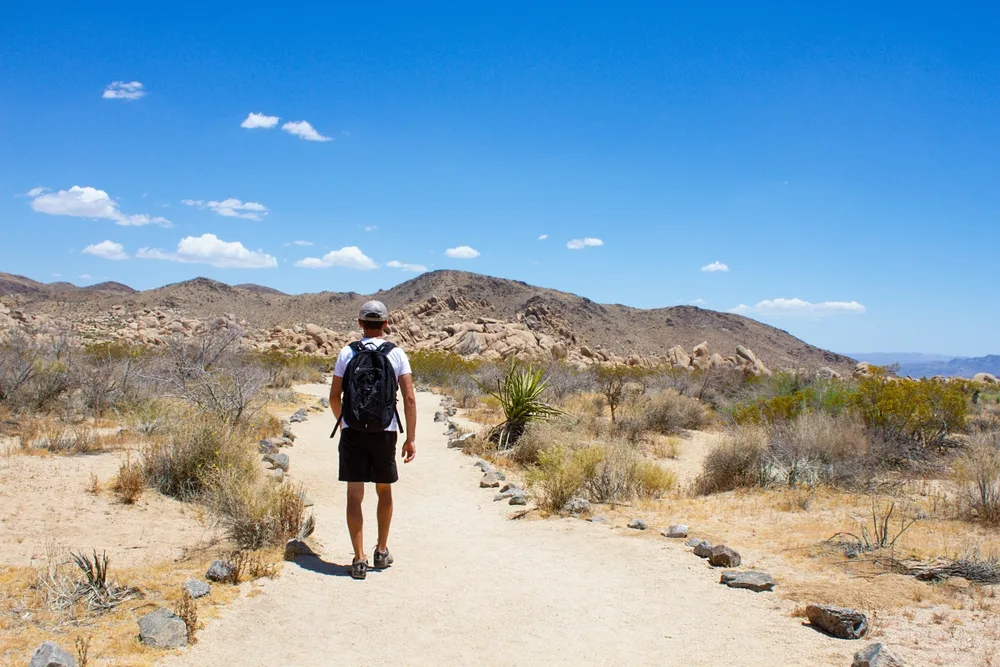
Anastasia_Photography/Shutterstock
The worst time to visit Joshua Tree is during the summer, when the hot conditions make it impossible to explore the park properly. It would be a mistake to underestimate the heat in Joshua Tree during the summer.
Temperatures often reach above 100 degrees, and the dry weather makes it feel even hotter. Strong rainstorms can cause flash flooding. The heat is not just uncomfortable, it can also be dangerous.
Heatstroke and heat exhaustion are frequent problems and can be deadly. People and pets have died of heatstroke in Joshua Tree. The park is large and remote, with extremely limited cell phone service, so it may be hard to get help.
If you visit during the summer, be sure to follow the park’s safety tips for summer visits:
- Bring at least two gallons of water per day per person.
- Bring snacks and electrolytes to treat heatstroke.
- Leave all pets at home.
- Wear long, loose clothing, a hat, and sunscreen.
- Don’t hike during the hottest part of the day.
- Check the weather forecast for heat warnings, storm warnings, and air quality indexes.
There are some benefits to coming in the summer. Summer nights are the best for stargazing because the Milky Way is visible only between April and September. You’ll also have most of the park to yourself.
Frequently Asked Questions
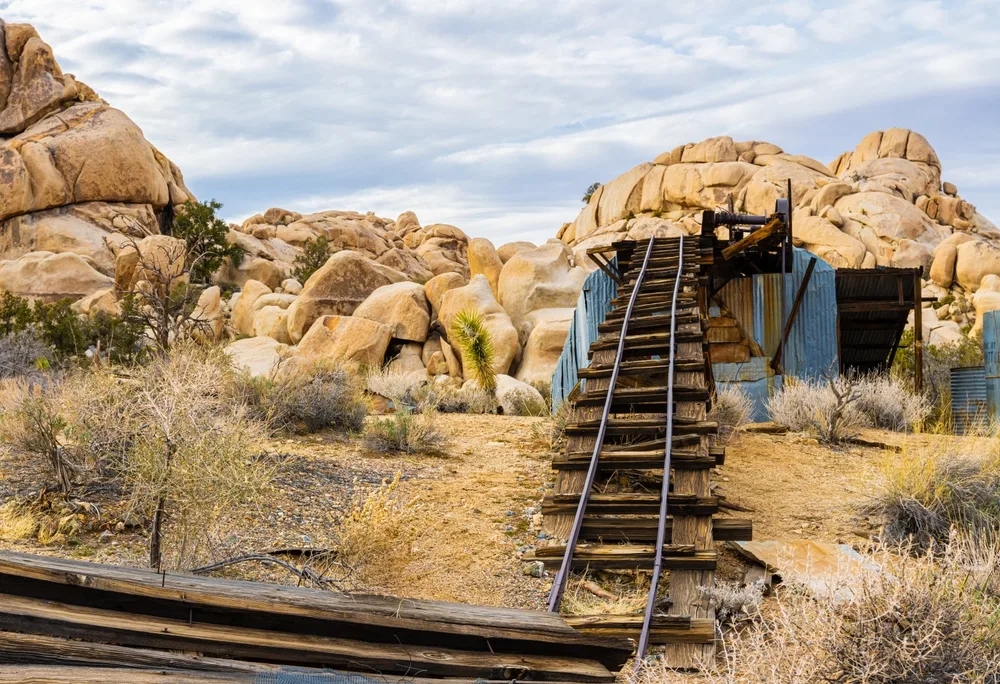
Billy McDonald/Shutterstock
Here are some of the most common questions people have asked about picking the right time to visit Joshua Tree:
When is the best time of year to visit Joshua Tree?
Spring is the best time of year to visit Joshua Tree because you can take advantage of the beautiful weather and catch the beautiful wildflower blooms.
Is Joshua Tree safe in the summer?
Joshua Tree is not safe in the summer due to the extreme, sometimes deadly heat. To visit safely during the summer, only move around in the very early morning or late evening.
What is the hottest month in Joshua Tree?
July is the hottest month in Joshua Tree, with temperatures frequently reaching over 100 degrees. August is also very hot.
Is Joshua Tree too hot in July?
Joshua Tree is far too hot in July for most activities such as hiking. If you plan on camping, get there in the evening for peak stargazing.
So, What’s the Best Time to Visit Joshua Tree?
To visit Joshua Tree safely, time your visit to be sometime between October and May, when you avoid the summer heat. Spring is the most popular season for visiting thanks to the flowers, but winter and fall also have their charms.



